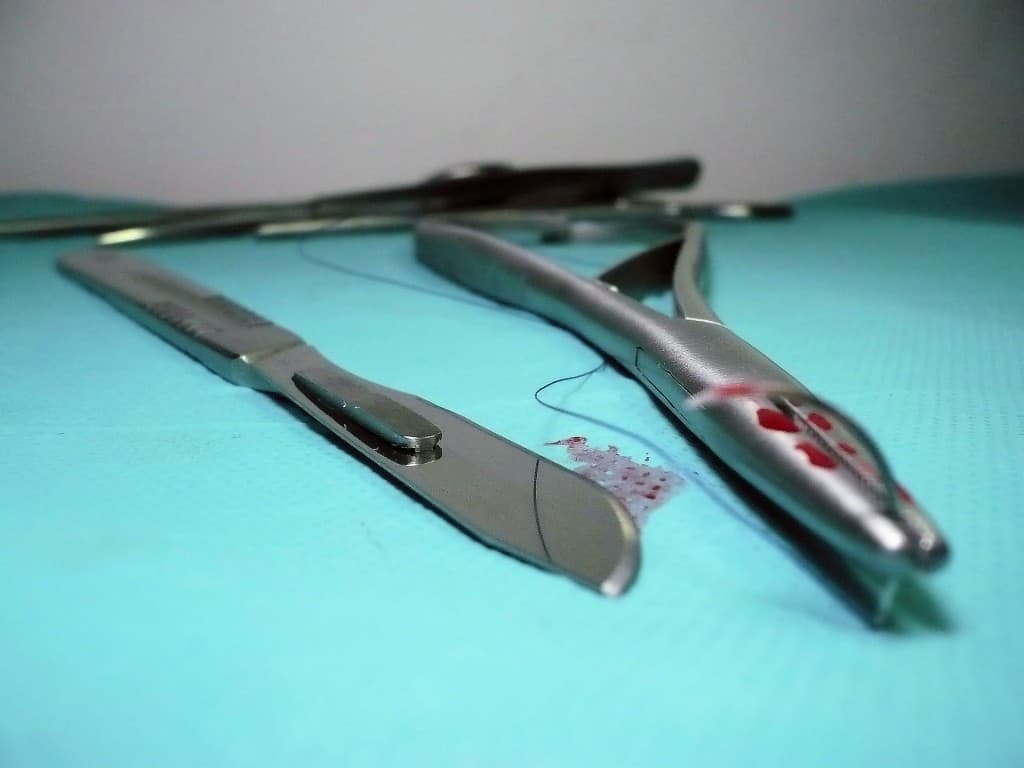 Sharps waste is considered to be any device that could possibly cut or pierce the user’s skin, including but not limited to scalpels, needles, razor blades, and even glass objects such as microscope slides containing possible biohazards.
Sharps waste is considered to be any device that could possibly cut or pierce the user’s skin, including but not limited to scalpels, needles, razor blades, and even glass objects such as microscope slides containing possible biohazards.
One should always use fully disposable scalpel units if possible. Never use scalpel blades without a proper handle that locks the blade into place. If you must use a blade that separates from the handle, use a device like Qlicksmart to fully enclose the blade for disposal. If a device of this sort is not available, use forceps to remove the blade – never use your fingers. Best practice is to follow the rule that only one hand should be touching the tool at any given time.
When dissecting or performing surgical tasks, consider wearing steel mesh gloves over latex gloves to provide a shield in the instance a blade comes into contact with your hand.
If a blade falls or breaks, do not pick up the fallen scalpel blades with fingers. Use forceps or a magnet to attract the pieces for disposal. If a blade is broken, do not attempt to reattach it to the handle – use a new blade.
Do not place any instruments into your pockets and be sure to pat down lab coat pockets prior to placing your hand in them. It is best to keep a designated tray for storage of tools in use.
Avoid passing sharp instruments between two persons. If passing is necessary, develop a system to do so (i.e. set the tool down on a surface before the other picks it up).
When cleaning a non-disposable sharps tool, use a cleansing brush with a handle or allow it to soak in a special disinfectant to eliminate the need for hand scrubbing. There are a variety of solutions available such as Eazy Soak. Once the tools are finished soaking, use forceps to reach into the cleansing bin or sink to grab the instruments.
Lastly, ensure all sharps are disposed of in proper marked sharps containers. Keep the waste receptacles close (recommended within an arm’s length) to where the task is completed, so little transfer is needed. Do not overfill these containers – the used sharps should fall freely into the disposal bin. Note that “makeshift” containers such as empty bottles or cans are not suitable for sharps disposal in any facility.
